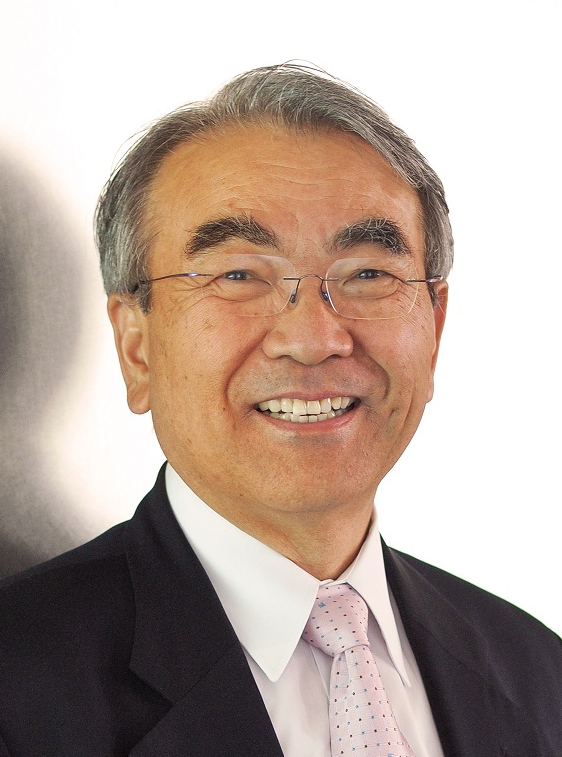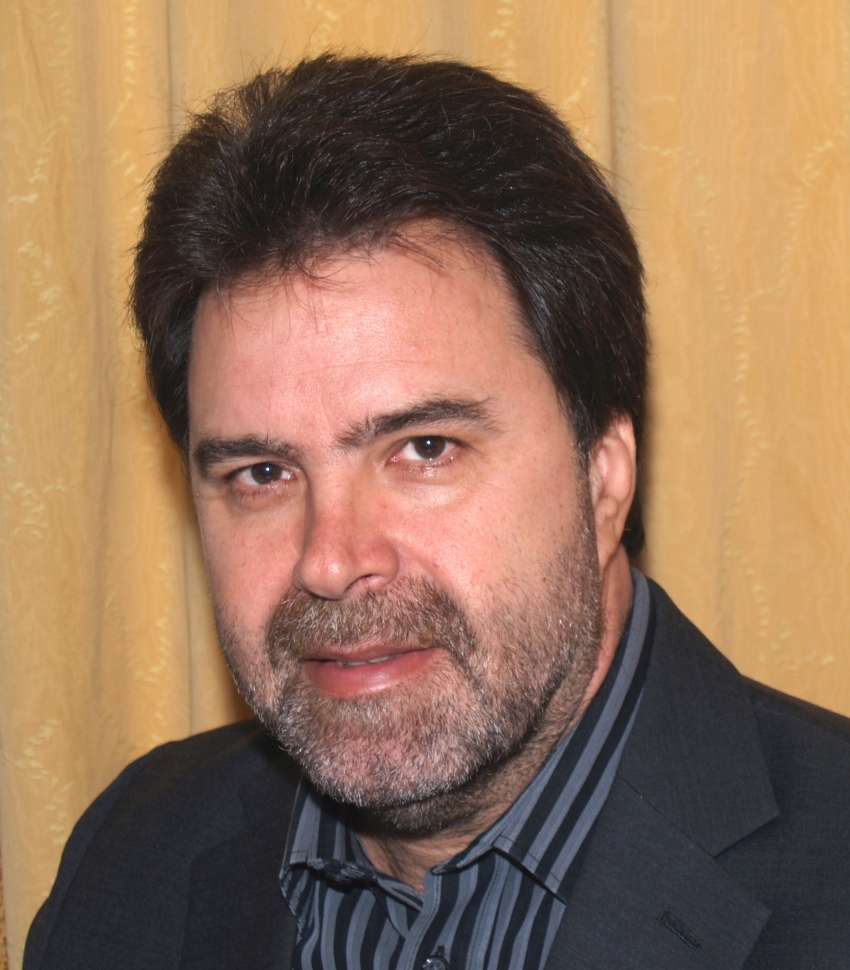Keynote Speech
Invited Speakers:
Smart Headlight: A new active augmented reality that improves how the reality appears to a human
Prof. Takeo Kanade
U.A. and Helen Whitaker University Professor
Carnegie Mellon University
Advances in Cryptographic System Implementations
Prof. Thanos Stouraitis
The University of Patras, Greece
Title:
Smart Headlight: A new active augmented reality that improves how the reality appears to a human
Speaker:
Prof. Takeo Kanade (U.A. and Helen Whitaker University Professor,
Carnegie Mellon University)
Schedule:
9:15-10:15, 18 November 2014
Abstract:
A combination of computer vision and projector-based illumination opens
the possibility for a new type of augmented reality:
selectively illuminating the scene to improve or manipulate
how the reality itself, rather than its display, appears to a human.
One such example is the Smart Headlight being developed
at Carnegie Mellon University's Robotics Institute.
The project team has been working on a new set of capabilities for
the headlight, such as making rain drops and snowflakes disappear,
allowing for the high beams to always be on without glare,
and enhancing the appearance of objects of interest.
This talk will present the idea, approach,
and current status of the Smart Headlight Project.
Biography:
 Takeo Kanade is the U. A. and Helen Whitaker University Professor
of Computer Science and Robotics at Carnegie Mellon University.
He received his Doctoral degree in Electrical Engineering
from Kyoto University, Japan, in 1974.
After holding a faculty position there,
he joined Carnegie Mellon University in 1980.
He was the Director of the Robotics Institute from 1992 to 2001.
He also founded and directed the Digital Human Research Center
in Tokyo from 2001 to 2010, and the Quality of Life Technology Center
at Carnegie Mellon from 2006 to 2012.
Takeo Kanade is the U. A. and Helen Whitaker University Professor
of Computer Science and Robotics at Carnegie Mellon University.
He received his Doctoral degree in Electrical Engineering
from Kyoto University, Japan, in 1974.
After holding a faculty position there,
he joined Carnegie Mellon University in 1980.
He was the Director of the Robotics Institute from 1992 to 2001.
He also founded and directed the Digital Human Research Center
in Tokyo from 2001 to 2010, and the Quality of Life Technology Center
at Carnegie Mellon from 2006 to 2012.
Dr. Kanade works in multiple areas of robotics: computer vision,
multi-media, manipulators, autonomous mobile robots,
medical robotics and sensors, producing more than 400 technical papers
and more than 20 patents.
The most notable advanced intelligent robotics and vision technologies
whose origin and major development are often attributed
to Dr. Kanade include: face recognition for which he developed
one of the earliest systems in the early 70's,
followed by a series of pioneering work on face detection, alignment,
and expression analysis;
the Lucas-Kanade tracking algorithm that is the basis of today's
video motion analysis including video encoding;
driverless car for which his Navlab project accomplished
the ''No Hands Across America'' demonstration in 1995
traveling more than 4000km by vision-based autonomous driving;
and multi-camera technology that uses a large number of cameras
for stereo, scene modeling, and entertainment
for which his EyeVision system, a movie Matrix-like replay system
used in the broadcast of Super Bowl IIIV,
which set the trend we see today.
Dr. Kanade has been elected to the National Academy of Engineering
and the American Academy of Arts and Sciences.
Awards he received include the Franklin Institute Bower Prize,
ACM/AAAI Newell Award, Okawa Award, NEC Computer and Communication Award,
Tateishi Grand Prize, Joseph Engelberger Award, Funai Accomplishment Award,
IEEE Robotics and Automation Society Pioneer Award,
and IEEE PAMI Azriel Rosenfeld Lifetime Accomplishment Award.
Title:
Advances in Cryptographic System Implementations
Speaker:
Prof. Thanos Stouraitis (The University of Patras, Greece)
Schedule:
10:30-11:30, 18 November 2014
Abstract:
Advancing telecommunications, data storage, military, health,
and other "information- sensitive" technologies have accented
cryptography as an important design and security factor.
This talk addresses the application framework and VLSI design
implementation challenges of modern cryptographic applications
and illustrates various cryptography implementation solutions.
Of particular interest for this discussion are hardware designs
for cryptography as well as the impact of recent algorithmic
and mathematical advances in computer arithmetic and alternative
number system representations that are useful for cryptography.
The lecture also attempts to offer directions towards a more
qualitative work model for future cryptography hardware system
researchers and designers by showcasing the added value offered
by mathematical and algorithmic improvements rather than
isolated hardware optimization techniques or exploitation
of inherent capabilities of state-of-the-art FPGA devices.
Biography:
 Dr. Thanos Stouraitis, an IEEE Fellow for his "contributions in
digital signal processing architectures and computer arithmetic,"
is a Professor of the ECE Dept. at the University of Patras, Greece,
where he directs the Signal and Image Processing Laboratory.
He was President of the IEEE Circuits and Systems Society
for 2012-3.
Dr. Thanos Stouraitis, an IEEE Fellow for his "contributions in
digital signal processing architectures and computer arithmetic,"
is a Professor of the ECE Dept. at the University of Patras, Greece,
where he directs the Signal and Image Processing Laboratory.
He was President of the IEEE Circuits and Systems Society
for 2012-3.
He has served as a member of the founding AdCom of the University
of Sterea Hellas in Greece. He has served on the faculty of
The Ohio State University and has visited the University of Florida,
the New York Polytechnic University,
and the University of British Columbia.
He got his Ph.D. in Electrical Engineering from the University of
Florida, an M.Sc. from the University of Cincinnati, an M.S. from the
University of Athens, Greece, and a B.S. in Physics from the University
of Athens, Greece.
His current research interests include signal and image processing
systems, application-specific processor technology and design, computer
arithmetic, and design and architecture of optimal digital systems with
emphasis on cryptographic systems.
He has authored more than 180 technical papers as well as several books
and book chapters and holds one patent on DSP processor design. He has
led several DSP processor design projects funded by the European Union,
American organizations, and the Greek government and industry.
He served as Regional Editor for Europe for the Journal of Circuits,
Systems, and Computers, as Associate Editor for several IEEE
Transactions. He reviews proposals for NSF, the European Commission, and
other agencies. He has served as general chair of IEEE ISCAS 2006 and
several other IEEE conferences.
He has received several awards, including the IEEE Guillemin-Cauer Award.





 Takeo Kanade is the U. A. and Helen Whitaker University Professor
of Computer Science and Robotics at Carnegie Mellon University.
He received his Doctoral degree in Electrical Engineering
from Kyoto University, Japan, in 1974.
After holding a faculty position there,
he joined Carnegie Mellon University in 1980.
He was the Director of the Robotics Institute from 1992 to 2001.
He also founded and directed the Digital Human Research Center
in Tokyo from 2001 to 2010, and the Quality of Life Technology Center
at Carnegie Mellon from 2006 to 2012.
Takeo Kanade is the U. A. and Helen Whitaker University Professor
of Computer Science and Robotics at Carnegie Mellon University.
He received his Doctoral degree in Electrical Engineering
from Kyoto University, Japan, in 1974.
After holding a faculty position there,
he joined Carnegie Mellon University in 1980.
He was the Director of the Robotics Institute from 1992 to 2001.
He also founded and directed the Digital Human Research Center
in Tokyo from 2001 to 2010, and the Quality of Life Technology Center
at Carnegie Mellon from 2006 to 2012.
 Dr. Thanos Stouraitis, an IEEE Fellow for his "contributions in
digital signal processing architectures and computer arithmetic,"
is a Professor of the ECE Dept. at the University of Patras, Greece,
where he directs the Signal and Image Processing Laboratory.
He was President of the IEEE Circuits and Systems Society
for 2012-3.
Dr. Thanos Stouraitis, an IEEE Fellow for his "contributions in
digital signal processing architectures and computer arithmetic,"
is a Professor of the ECE Dept. at the University of Patras, Greece,
where he directs the Signal and Image Processing Laboratory.
He was President of the IEEE Circuits and Systems Society
for 2012-3.